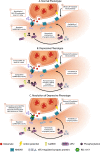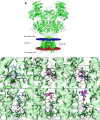Esmethadone-HCl (REL-1017): a promising rapid antidepressant
- PMID: 36890259
- PMCID: PMC10465385
- DOI: 10.1007/s00406-023-01571-4
Esmethadone-HCl (REL-1017): a promising rapid antidepressant
Abstract
This review article presents select recent studies that form the basis for the development of esmethadone into a potential new drug. Esmethadone is a promising member of the pharmacological class of uncompetitive N-methyl-D-aspartate receptor (NMDAR) antagonists that have shown efficacy for major depressive disorder (MDD) and other diseases and disorders, such as Alzheimer's dementia and pseudobulbar affect. The other drugs in the novel class of NMDAR antagonists with therapeutic uses that are discussed for comparative purposes in this review are esketamine, ketamine, dextromethorphan, and memantine. We present in silico, in vitro, in vivo, and clinical data for esmethadone and other uncompetitive NMDAR antagonists that may advance our understanding of the role of these receptors in neural plasticity in health and disease. The efficacy of NMDAR antagonists as rapid antidepressants may advance our understanding of the neurobiology of MDD and other neuropsychiatric diseases and disorders.
Keywords: Esketamine; Esmethadone; Ketamine; Major depressive disorder; N-Methyl-D-aspartate receptor; REL-1017.
© 2023. The Author(s).
Conflict of interest statement
Relmada Therapeutics and its consultants and employees contributed to all aspects of this manuscript, including all described experimental work.
Figures



